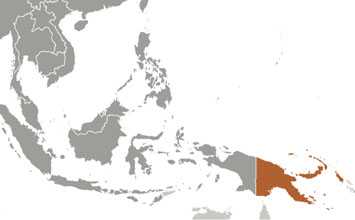
Papua New Guinea (PNG) has the largest HIV epidemic in the Pacific Region. Since 2007 the Centers for Disease Control and Prevention (CDC) and the World Health Organization (WHO) have partnered with the government of PNG to expand and enhance the national HIV/AIDS program. The CDC approach to technical assistance in PNG emphasizes collaboration with national stakeholders, in-country partners (such as WHO), and other U.S. agencies (such as the U.S. Agency for International Development and the Department of Defense) to build local capacity through mentoring and coaching for PNG’s provincial and national-level government. CDC, where necessary, provides its expertise with skills and experience from abroad to help implement the national HIV/AIDS strategy and to strengthen the national health system.

Staff
CDC office (physical presence)
1 U.S. Direct Hire
5 Locally Employed

At a Glance
Population: 8.2 million
Per capita income: $2,800
Life expectancy at birth women/men: 65/61 years
Infant mortality rate: 46/1000 live births
Source: Population Reference Bureau Fact Sheet, 2016

Top 10 Causes of Death
Source: GBD Compare, 2010
- Lower-Respiratory Infection
- Ischemic Heart Disease
- Stroke
- Chronic Obstructive Pulmonary Disease
- Diabetes
- Road Injury
- Iron-Deficiency Anemia
- Asthma
- Diarrheal Diseases
- Neonatal Preterm Birth Complications
What CDC Is Doing
- Page last reviewed: June 30, 2017
- Page last updated: June 30, 2017
- Content source:
Global Health
Notice: Linking to a non-federal site does not constitute an endorsement by HHS, CDC or any of its employees of the sponsors or the information and products presented on the site.



 ShareCompartir
ShareCompartir
